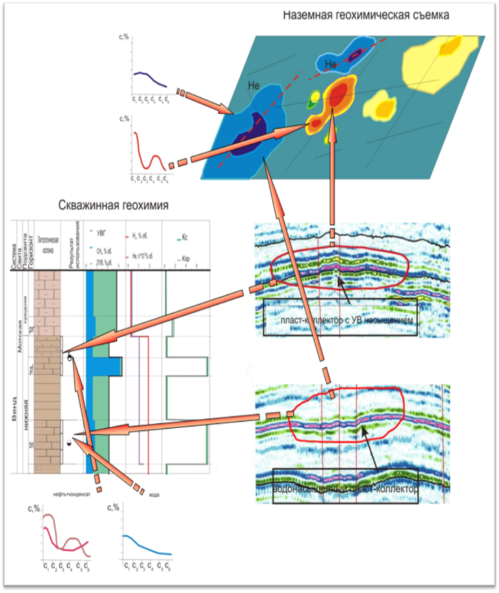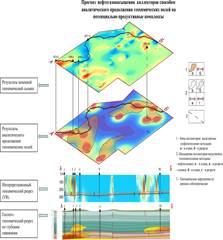Search for oil and gas
Geochemical prospecting for oil and gas (GPOG) is a complex of geological exploration aimed at identifying and assessing oil and gas prospects, based on the study of spatial regularities in the distribution of concentration fields of hydrocarbon compounds and chemical elements in a sedimentary section of the oil and gas basin.
Great importance is attached to the problem of the development of geochemical methods in the Russian Federation and abroad since their introduction into geological exploration entails an increase in the efficiency of oil and gas prospecting and a reduction in the costs of prospecting and exploration of hydrocarbon accumulations.
Particularly relevant is the problem of direct geochemical prospecting of territories within which hydrocarbon deposits of non-anticlinal type with a mosaic type of reservoirs are widely developed, where the application of traditional geological and geophysical methods is not always effective.
Geochemical prospecting is an effective, mobile, inexpensive, and environmentally friendly method of forecasting, prospecting, and exploring hydrocarbon deposits. The geochemical methods, in addition to geophysical studies, make it possible to not only predict the sedimentary section’s oil and gas potential on a geological-tectonic basis but also to carry out a quantitative and qualitative assessment of subsoil hydrocarbon potential.
The forecasting and prospecting of oil and gas habitat carried out by geophysical company Sibgeocom are implemented based on a comprehensive study of the sedimentary section’s physicochemical parameters, based on the interconnection and interdependence of geochemical and geophysical fields in space and time, and most manifested in the phenomenon of paragenesis of zonal-annular anomalies in geochemical and geophysical fields over hydrocarbon deposits. The assessment of oil and gas habitat of potentially productive complexes is carried out by the method of seismogeochemical forecasting implemented on a genetic basis in a multilevel system: the earth’s surface – borehole – target horizon (productive horizon). Based on the borehole geochemistry materials, a parametrized geological-geochemical model of the sedimentary section of the work area is compiled, the oil and gas-promising intervals are identified, their phase saturation and composition and properties of the hydrocarbon systems are determined, which are linked to the ground survey data. It is followed by complex processing and interpretation of geochemical and geophysical (seismic) data, linking the anomalies of seismic attributes and geochemical indicators, delimitation of zones of distribution of reservoirs, identification of their phase saturation (oil, gas, water), and prediction of the hydrocarbon fluid composition. Computer modeling of concentration fields to the level of potentially productive horizons is carried out using the ACGF technique (solution of the geochemical inversion problem), which allows us to delimit the hydrocarbon migration (HC accumulation) sources in the reservoir. The modeling of geochemical fields by building a three-dimensional geological-geochemical model including the oil and gas-bearing rock complex (reservoir) and overlying over-productive deposits in the HC dispersion halo up to the ground surface is carried out within the limits revealed by geochemical and geophysical data, and oil and gas perspective objects. The final work is carried out using “Petrel” software and PC “Selector” (solution of the direct problem of geochemistry).
Implementation of geochemical work on some facilities of the Siberian Platform allows to localize gas-saturated reservoirs in potentially productive complexes and detect HC accumulations.
Sibgeocom Ltd possesses great experience in geochemical work in the regions of Eastern Siberia and the Far East, with the knowledge of their geological and geochemical conditions, a proven fieldwork technique, and the ability to process and interpret data in various geological conditions. The company has geological and geochemical materials and databases on the whole previously completed research complex, including borehole (deep and core wells) geochemistry and ground geochemical (hydro gas-geochemical, water-gas, helium survey, geochemical testing of near-surface sediments and snow cover), data, which are widely used in the performance of work.



